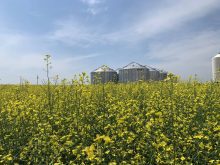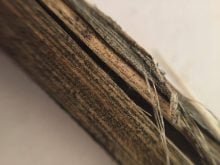Clint Jurke, agronomy director for the Canola Council of Canada says the industry is “losing millions of dollars in terms of canola yields every year due to blackleg.” The disease is also a trade issue, and we need to improve control as much as possible, he adds.
“We really want growers to look at what is the overall blackleg risk in their farming operation,” says Jurke. “Do they have any practices that are higher risk, like tight rotations?” Farmers then need to adopt practices to reduce that risk, he adds.
Read Also

Cancer agency reclassifies another herbicide ‘probably carcinogenic’
The WHO’s cancer research agency has now put atrazine, a herbicide well known to corn growers, in the same potential-hazard category where the agency put glyphosate.
- Read more: Slowing blackleg resistance with rotation
Jurke urges canola growers to scout. “You need to be scouting because that’s the only way you’re going to know whether or not you have a blackleg problem.”
The Canola Council of Canada recommends scouting during three different periods:
- Before seeding, in case canola residue has pseudothecia. Pseudothecia look like tiny black dots, and they release spores.
- During the three-to-six leaf stage, walk a w-pattern, starting at the field edge. Look for lesions.
- Swathing is the best time to look for cankers. Walk a W-pattern, pulling at least 50 plants. Clip at the base of the stem and look for blackened tissue in the stem’s crown.
Farmers who scout regularly and don’t find blackleg might want to stick to similar varieties in the future, Jurke says. But if they find blackleg, they’ll know that variety’s resistance has fallen down.
The resistance breakdown isn’t specific to any one company, Jurke says. “It’s just the nature of the pathogen. The pathogen changes quite quickly to any type of controls we try throwing at it.” The best way to control it is “to keep changing things so the pathogen is always one step behind you,” he adds.
Godfrey Chongo, Bayer plant pathologist, says other measures, such as chemical control, can go hand-in-hand with resistant varieties. But one practice in particular tops his disease-management wish-list.
“I think the one thing that is probably underemphasized is crop rotation because you want to employ strategies that limit or minimize potential changes within the pathogen population,” says Chongo. “And one of those is to reduce inoculum in the field.”
















